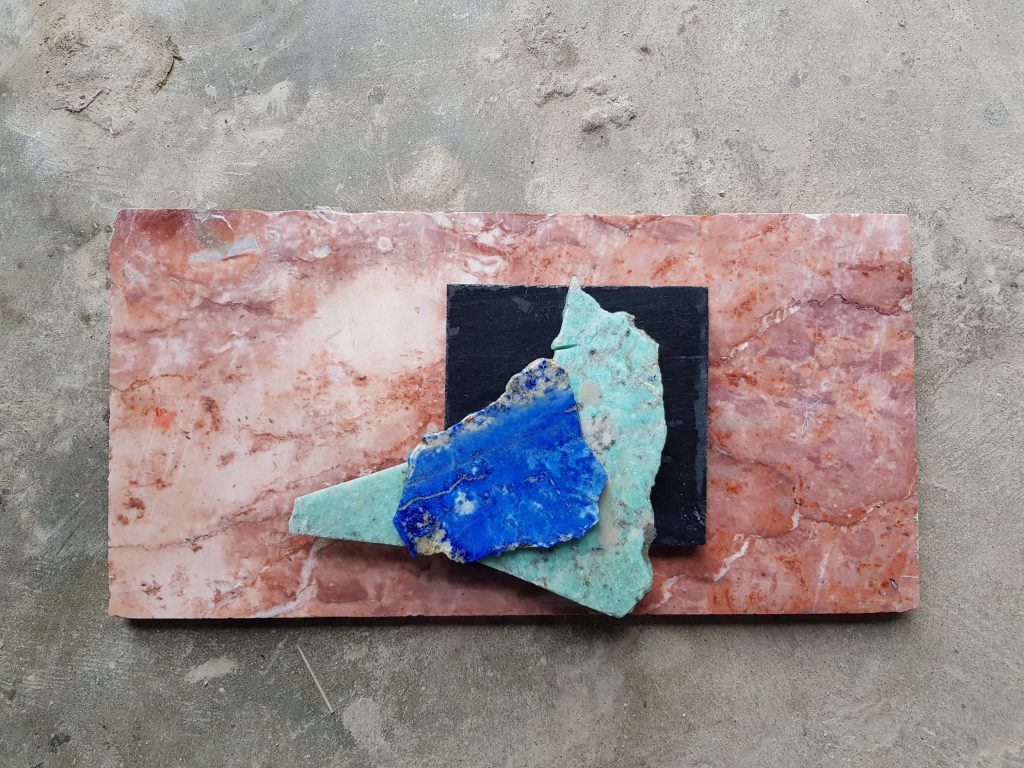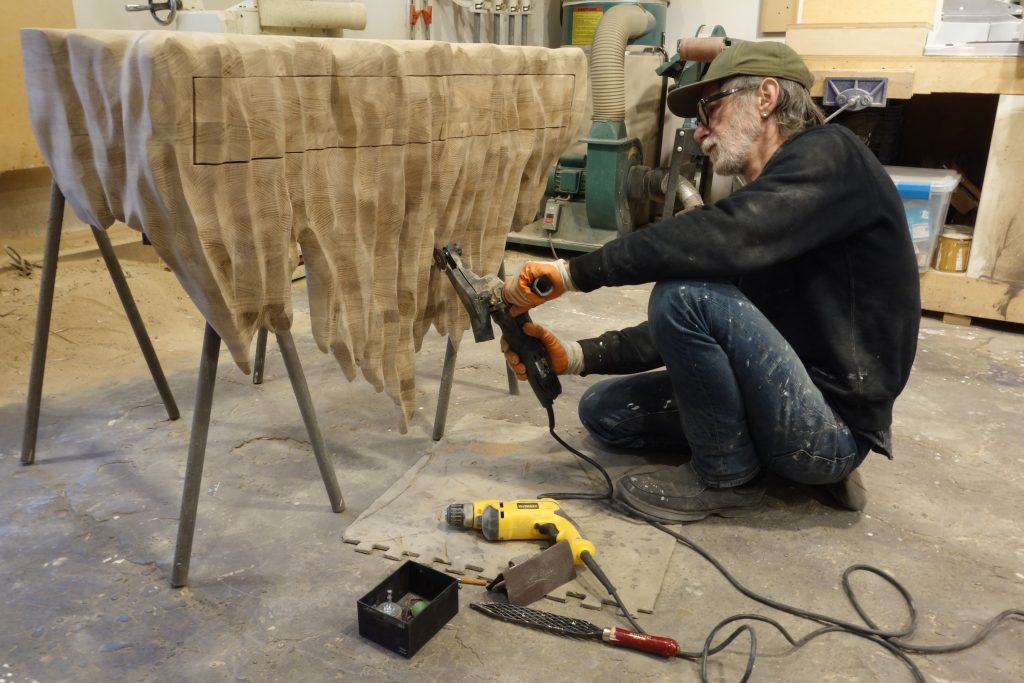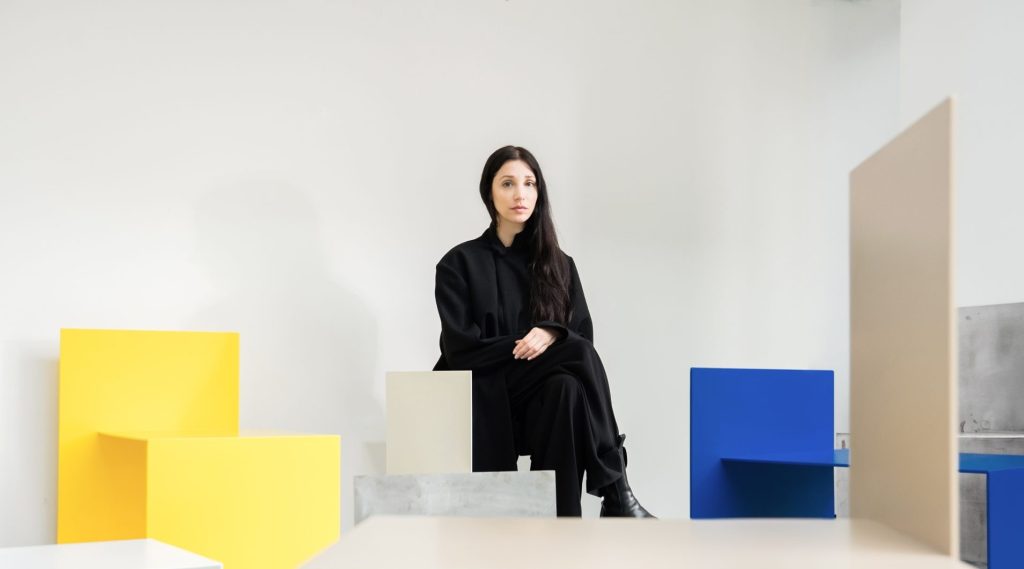
The Lél Collection: Cultural Preservation & Personal Healing through Craft
“[We] see our work both as an act of the preservation of an ancient cultural tradition as well as a healing mechanism, a way to sustain belief in that which is older than (and transcends) the devastation wreaked by the region’s sustained conflict, war, and migration.”
– Meherunnisa Asad, Creative Director of Lél Collection
View pieces by the Lél Collection, including “Jais” from the Talli x Misbah collection (homeware)
Under the creative direction of the Irthi Contemporary Crafts Council, the “Design Labs” initiative brings local or international designers together with Emirati artisans from the Bidwa Social Development Programme to create unique, collaborative pieces. In working with craftswomen from the Bidwa Centre, the initiative allows for an exchange of craft and design knowledge as well as an exploration of new techniques and materials, developing the practices and skills of the artisans. The collections produced through Design Labs represent this exchange of ideas and, at the same time, reflect the honed skills and hands of their makers.
Lél Collection, an artistic collective based in Peshawar, Pakistan, works to preserve and reinterpret the artistic tradition of pietra dura – handcrafted stone inlay. The atelier was founded by Farhana Asad over twenty years ago and is now run by Asad in collaboration with her daughter, Meherunnisa Asad. With support from the Bill and Melinda Gates Foundation, Lél Collection works with local Pakistani craftsmen and displaced Afghani refugee artisans to develop handicraft techniques and support the continuation of knowledge and skills for future generations.
As part of the Design Labs initiative, Lél Collection has collaborated with artisans from the Bidwa Centre in Sharjah to produce two “Talli x Misbah” collections. The collections reinterpret the misbah – rosary-like beads used for prayer – instead creating one collection of delicate, open jewellery and another collection of exaggerated, sculptural homeware accessories. The juxtaposition of weighty stone and intricately woven silver and gold thread or rope evidences the dialogue and exchange of craft knowledge, weaving alternative approaches to design together to create unique and visually captivating pieces.
The Lél Collection has it roots in continuing cultural and craft traditions, in what ways have you approached these notions through your practice? How does this approach connect with the studio’s work with local craftsmen and refugee artisans?
The Pukhtoons of Pakistan and Afghanistan are culturally one people. The relatively recent man-made geographical borders are unimportant compared to a rich common history of shared language, foods, values, and traditions. The Lél atelier began its life 20 years ago in Peshawar, Pakistan and is still based there. The city has traditionally been a busy trading centre for Pakistan and its Central Asian neighbours and, particularly, for exchanges with Afghanistan. The multiple wars that have played out in Afghanistan over the last 50 years have seen more than a million Afghans seek refuge in Pakistan. The entry point, and often the area where the refugees settle, is Peshawar. As a poor country, Pakistan doesn’t have a national welfare system, so locals and refugees alike use their trade or craft to make a living.
In the early 1980s, my mother, Farhana Asad, found herself mesmerised by a small box that she found in the antique bazaar in Peshawar. It was this box that led her to a master artisan – a refugee from Afghanistan, resident in Pakistan – from whom she learned the skill of pietra dura (stone inlay technique) and developed a passion for its preservation. For her, it represented a bridge between the past and the present, both through the exploration of traditional and modern design, and through the artisans of Afghanistan and Peshawar that she went on to train.
Why is it important for you, as a studio and personally, to work with these craftsmen and artisans?
Both my mother and I see our work both as an act of the preservation of an ancient cultural tradition as well as a healing mechanism, a way to sustain belief in that which is older than (and transcends) the devastation wreaked by the region’s sustained conflict, war, and migration. To the Afghan refugees that we work with, it provides more than the simple security of paid work – it is a craft rooted in the familiar, in the associations of home. Where so much is lost in movements and migrations, there is yet something of history, of culture, and of home to which they are able to hold on.


“Jais” from the Talli x Misbah collection (homeware) 

Can you describe the development and design process behind the two “Talli x Misbah” collections created for Irthi’s “Design Labs” initiative?
The misbah is a rosary-like string of beads used for counting prayers; we reinterpreted this Islamic religious ornament as a sculptural home accessory. Our artisans, many of whom are displaced Afghan craftspeople now residing in Pakistan, and local UAE-based trainee craftswomen collaborated to produce semi-precious stone and marble beads as large-scale ornaments ranging from three to eight metres long and engraved with geometric shapes inspired by traditional patterns carved on Emirati doors. The result is a series of sculptural design elements that may be placed on a dining table, hung, or simply laid on the floor to highlight the poetics of a space.![]()
![]()
A large aspect of the “Design Labs” initiative is the sharing of knowledge, how is this portrayed through the Lél Collection’s pieces?
Lél brought its artisans, Afghan refugees now settled in Pakistan, to teach Emirati trainees the crafts of stone inlay and jewellery bead making. These kinds of production techniques did not previously exist at the Bidwa Center. Although there may have been a language barrier, the Emirati trainees were able to quickly grasp the knowledge and transfer the abstracted Emirati door patterns onto the marble beads using the pietra dura technique and create the rounded silver beads.
The Emirati artisans also brought in their knowledge of talli weaving, knotting, and macramé into the binding element of the misbahs and tassels. Traditionally, talli weaves were created using real gold and real silver threads. The collection of jewellery misbahs touches on those traditions to create contemporary, open misbahs.
In reference to technique, material, and form, in what ways have the “Talli x Misbah” collections intertwined the traditional and the contemporary?
The collection of jewellery misbahs redefines the traditional misbah form, opening up the traditional loop, while creating talli weaves down the middle, separating the twenty-three beads on one side from ten beads on the other. The misbah is now both a functional jewellery item and a linear sculpture.
The collection of homeware accessory misbahs scales up the traditional misbah to surpass its function as prayer beads and become more of a symbolic contemporary sculpture, representing Emirati culture.


Bio
![]()
![]()
The Lél Collection is an artistic collective dedicated to preserving, reinterpreting, and evolving the ancient art of handcrafted stone inlay, Pietra dura.
Founded by Farhana Asad two decades ago, Lél is run in collaboration with her daughter, Lél’s Creative Director, Meherunnisa Asad, with its collections handcrafted from semi-precious stones and marble.
Master artisans possessing outstanding skill and a passion for preserving traditional craft techniques handcraft each unique piece. They are local craftsmen and refugee artisans displaced by the Afghan conflict to Peshawar in neighbouring Pakistan.












